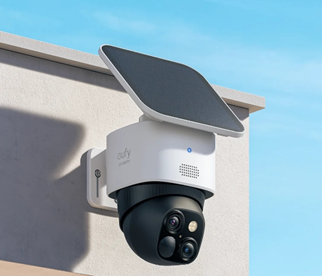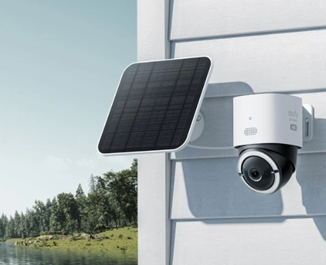Outdoor security is a priority for homeowners, and choosing the right system is crucial. Wired and wireless cameras each have unique characteristics that meet different security needs. Wired systems offer reliability, while wireless options provide flexibility. Understanding these differences allows you to make an informed decision. This blog will help you explore installation processes, reliability and performance, security considerations, and cost factors. By the end, you’ll have a clearer idea of which camera system fits your home security plan best.
Installation and Setup
Wired Camera Installation Process
Installing wired cameras involves running cables from each camera to a central hub or recording device. The process requires drilling into walls to ensure cables are discreet and protected. Wired setups usually demand professional expertise, but they guarantee a stable and secure connection. Proper planning is necessary for the placement of cameras and accessibility to power outlets. Once installed, the reliability in power and data transmission makes wired cameras a preferred choice for stable security monitoring.
Wireless Camera Installation Process
Wireless cameras offer a simpler installation process. Users can mount the cameras where desired without worrying about wired connections. Since they rely on Wi-Fi, these cameras can be installed in hard-to-reach places. Installation usually involves attaching the camera to a structure and connecting it to a wireless network through an app. Simple DIY tasks make wireless cameras a suitable option for those seeking flexibility. No cable management means quicker setup with minimal intrusion into the property’s structure.
Time and Tools Required for Each
Wired cameras typically require more time and tools, including drills, screwdrivers, and cable management systems. This often means a longer installation period, depending on the complexity of the infrastructure. On the contrary, wireless cameras need minimal tools – often just a screwdriver to secure the camera mounts. The primary time investment involves setting up the network connection, taking significantly less time compared to wired systems. The tools and time involved can significantly impact your choice depending on your setup preferences.
Reliability and Performance
Wired Systems
Wired systems are known for their reliability. They offer a consistent data transmission rate ensuring high-definition video delivery without interference from other wireless devices. The connection remains stable regardless of network congestion, providing peace of mind to users. Wired systems’ performance does not fluctuate due to environmental factors like weather, making them suitable for locations requiring consistent coverage. Homeowners with larger properties often select wired setups to ensure comprehensive monitoring without signal dropouts.
Wireless Systems
Wireless systems provide incredible flexibility, making them ideal for temporary setups or locations where cable installation is not feasible. They rely on Wi-Fi to transmit video content, which can be subject to signal interference from other devices or weather conditions. Despite this, advancements in technology have significantly improved the reliability of wireless cameras. They are best used where mobility and ease of access are paramount. For homes with strong Wi-Fi networks, wireless cameras offer great performance with a simpler installation process.
Power Supply Considerations
The power supply is a critical consideration when choosing between wired and wireless systems. Wired cameras typically require a direct connection to a power source, usually through power-over-Ethernet (PoE) cables. This ensures they remain powered continuously. In contrast, wireless cameras may operate on batteries, which need regular charging or replacement, or they can be powered using solar panels. Understanding your property’s power supply infrastructure will help determine which system is more suitable for consistent surveillance.
Security and Data Protection
Wireless Transmissions
Wireless transmissions can be vulnerable to hacking if not properly secured. It’s essential to utilize strong passwords and encryption protocols to protect your data. Modern wireless cameras incorporate advanced encryption to safeguard against unauthorized access. Despite potential vulnerabilities, regular updates to firmware and security settings can mitigate risks. Investing in a secure router and enabling network security features further enhances protection against data breaches, offering reassurance for wireless system users.
Wired Connections
Wired connections are generally more secure than wireless ones. The physical cables provide a hard-to-tamper pathway for data transmission, preventing interference from external sources. This makes it difficult for unauthorized users to access your surveillance feeds. Physical access is required to tamper with the system, offering built-in protection. However, securing recording devices and implementing password protection remain essential to prevent unauthorized access to data.
Encryption and Firmware Updates
Both wired and wireless systems benefit from encryption and regular firmware updates. Encryption ensures that data is unreadable to anyone who might intercept it. Manufacturers release firmware updates to fix vulnerabilities and add features, enhancing your system’s security and functionality. Regularly updating firmware is critical for maintaining security integrity, providing an additional layer of protection against evolving cybersecurity threats. Keeping your system current optimizes data protection and overall performance.

Cost and Maintenance
Initial Investment Comparison
The initial investment for wired systems can be higher due to professional installation costs and the need for more equipment. This might include cables, power supplies, and recording devices. Wireless cameras generally have lower upfront costs because they require less hardware for installation and can often be set up as a DIY project. However, investment should be weighed against planned longevity and usage scenarios to determine overall value.
Ongoing Maintenance Needs
Wired cameras require minimal ongoing maintenance once installed, needing only occasional cleaning and software updates. On the other hand, wireless systems might demand more regular attention to ensure Wi-Fi stability and battery levels, if applicable. Regular checks for firmware updates ensure both systems remain secure and operationally efficient. The choice between these two systems might ultimately rely on your willingness to perform routine maintenance tasks and manage operational logistics.
Long-Term Value Assessment
Assessing long-term value between wired and wireless systems revolves around reliability, maintenance costs, and performance durability. Wired systems offer long-term stability and lower maintenance, making them appealing for permanent installations. Wireless systems provide the flexibility needed for evolving security needs, albeit with the potential for higher maintenance over time. Considering long-term property plans and potential technological advancements can aid in determining which system delivers better value.
Conclusion
Both wired and wireless outdoor security cameras offer unique benefits tailored to different needs. Wired options provide consistent power and secure data transmission, making them ideal for permanent setups. In contrast, wireless cameras offer flexibility, easy installation, and remote accessibility—perfect for dynamic security needs. The best outdoor security cameras often combine these strengths with high performance and smart features. When choosing, consider factors like installation ease, reliability, budget, and your property layout to find a system that fits your priorities and offers lasting protection.

